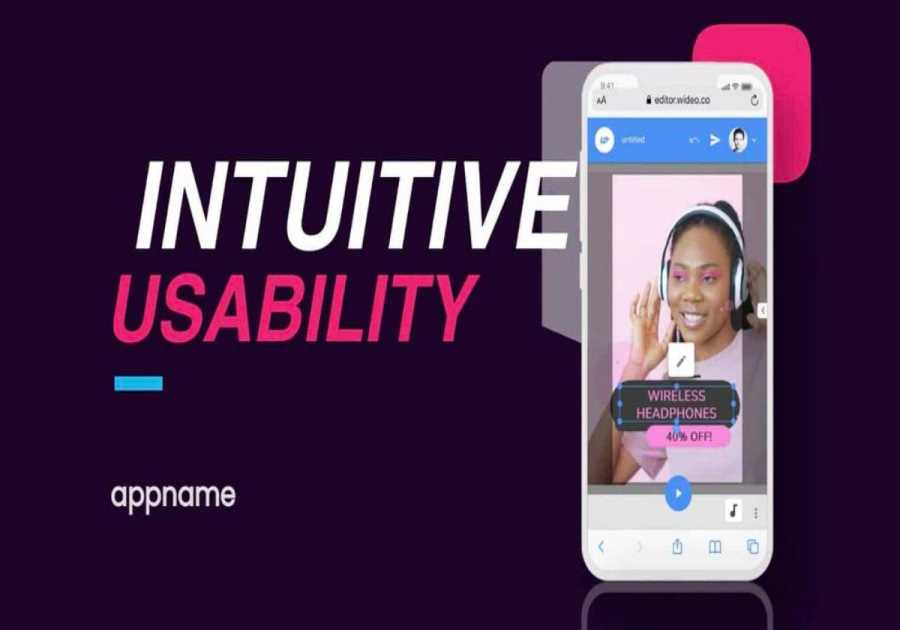
92% of people will trust a recommendation from someone they know – but 70% will also trust a recommendation from someone they have no relationship with at all.
Social proof is just one of the ways that brands can build trust with their target audience. If you can tap into this key concept in the psychology of selling, you can get a roadmap to how potential customers think, make decisions and calculate the risk and reward of every purchase.
Here’s what you need to know about sales psychology – and 6 key principles to help you sell more.
Click the links below to skip ahead:
What is the psychology of selling – and why is it important?
Popularized by Dr. Robert Ciadlini in his bestselling book Influence, the psychology of selling refers to the use of psychological principles to tap into the needs and emotions of your target audience to sell your services and products.
Rather than telling your customers what they should buy, the psychology of selling is about understanding individuals’ needs, wants and fears – and relating to them on an emotional level in order to encourage them to make a purchase.
Why you should be using psychology in sales
One of the biggest mistakes inexperienced sales professionals make is trying to convince someone to buy something by focusing on the product, the company and the cost.
As Moeed Amin founder and director of The Proverbial Door explains, people fall into the trap of thinking about themselves – rather than putting the buyer first.

After graduating with a degree in Neuroscience, Moeed Amin was struggling to find success in his sales job. That all changed when he realized the approach he was using wasn’t appreciating the psychology of the buyer. He reworked his technique, rooting his sales tactics in the psychology of selling.
Moeed now teaches other entrepreneurs how to use sales psychology to boost their revenue. His take on sales psychology? It’s about selling with integrity, appreciating the emotional needs of the person you’re selling to and helping them achieve their deepest desires.
When done well, the psychology of selling turns your sales technique into a positive, nurturing experience – rather than one that leaves your prospective customers cold.
Here are the top techniques you can use to sell more and help your customers feel good.
Top 6 sales psychology concepts and how to use them
Anyone can utilize the psychology of selling to sell more. If you want to win more sales, increase your revenue and grow your business, here are 6 key sales psychology concepts you need to know.
People trust experts. The psychology of selling calls this the principle of authority. The idea is simple: if you can establish yourself as an expert in your field, people are more likely to buy from you.
Your reputation can be used to immediately establish a sense of trust, credibility and reliability in conversations with prospective customers. If they’ve already heard of you, they’re more likely to listen to what you’ve got to say.
When it comes to selling online courses, you can build authority in your niche by publishing consistently in your chosen field. This includes:
- Building your social media following
- Publishing free resources
- Guest features on podcasts, blogs, publications and more
Content is a key tool to build your authority in your niche – and win more sales.
That’s how Dietitian Deanna made $1.2 million selling online courses. She utilized her authority on Instagram – where she has over 200K followers – to sell her courses and open doors. Read the full case study here.
Related: You’re an Authority, it’s Time to Act Like it (Sunny Lenarduzzi & Jane Stoller Share Tips)
The pull of a crowd is a powerful motivator. In the psychology of selling, social proof harnesses the power of other people to sell your products for you. If you can demonstrate how many people are already loving your products and services, you can encourage new customers to get on board.
Social proof can include:
- Customer reviews
- User testimonials
- Sign up statistics
- Social media shares
These tools all lend your business credibility. After all, if other people are already using and loving your products, why shouldn’t your prospective customers too?
Take a look at this example from Thinkific creator Ashley Warren who founded the Storytelling Collective. Ashley’s website uses social proof throughout to encourage more people to sign up to her mailing list and join her community.

Read the full case study of how the Storytelling Collective is helping 12,000 RPG-Writers tap into their creative process.
Related: Social Proof: 10 Examples & Tips To Use Credibility in Marketing
Though people like to know that other people are buying what they’re buying, there’s a flip side too. In the psychology of selling, the theory of scarcity is a really effective tool to boost your sales.
Scarcity rests on the principle that the less there is of something, the more people will want it. Limited editions, limited time only offers, and few items left in stock are all methods that make buyers hungry to get their hands on what you’re offering.
This impression of scarcity causes a spike in demand by creating a sense of urgency and exclusivity. If people think a product is about to run out, they’re more likely to make a purchase quickly. No time to delay!
When someone gives you a gift, you’re more likely to give them one back in the future. This is a social bias that means people tend to respond to a positive act with another positive act. When it comes to sales psychology, you can exploit this happy principle.
If you offer prospective customers something, they’ll often want to repay you. When it comes to sales, that might be the thing that gets them over the line to make a purchase.
You can use the principle of reciprocity when it comes to free trials, free gifts and other bonus products like a one-to-one call or free downloadable resources. Establish a bond with your potential customer, and watch them reciprocate down the line.
7-figure course creator Elizabeth Rider uses free downloads to build a bond with her followers – drawing on the principle of reciprocity to sell more courses. Read the full case study of how she found success here.

Top Tip: Reciprocity works best when you switch up the freebies you’re giving prospective customers. For example, if you offer them a 1-week free trial, next time you could give them a free workbook or template. The next time, offer them a free consultation as the final step towards making a sale.
In sales psychology, there’s a theory that people prefer to be consistent with things they’ve done or said. When they’ve made a decision, they usually run with it rather than switching to a different choice, regardless of whether or not it’s the best option for them. We’re creatures of habit.
When you’re trying to sell to prospective customers, you can play with this idea of commitment and consistency. Getting potential customers to commit to a small step can make it more likely that they’ll go the whole way in the future.
For example, an interactive quiz is a really effective way to get customers to say yes. When it comes to quizzes, people love to answer a set of questions and receive useful information in return. They agree to listen to some of your expertise – and they’re more likely to follow through and make a purchase from you in the future.
As humans, we’re much more likely to buy from someone we like than someone we don’t. Sounds simple right? When it comes to the psychology of selling, the theory of liking is a deceptively straightforward one. And anyone can tap into it.
If you can get your prospective customers to like you, there’s a much higher chance they’ll buy something from you.
Liking can refer to a range of different positive traits, including:
- Trustworthiness
- Attractiveness
- Intelligence
- Being complimented
- Shared interests, values and goals
Brands regularly use the theory of liking to shape their social media strategy. Rather than coming across as cold, faceless organizations, brands work hard to foster a sense of authenticity, trust and shared values on social media.
Thinkific creator Kate Norton, founder of Miss Excel, uses TikTok to build trust with her followers. Her fun, approachable videos are instantly likable – and a great way to drive more people to her online courses. Read the full case study about her six figure course business here.

Related: How to build a community around your brand
4 principles of decision making in sales
To utilize the psychology of selling, Moeed says sellers should appreciate the 4 principles of decision-making that every buyer goes through. Here are the steps you need to know.
Calculating and evaluating external information
All buyers start their purchasing decision by absorbing and evaluating information about your products and your company. This might include reading customer reviews, chatting to friends, checking out influencer recommendations and everything in between.
Most people will make a judgment based on how much they trust the source. By using the psychology of selling, you can work to provide your buyers with the information they need to make a decision. Building authority in your niche and using social proof are both techniques you can use to create a positive impression here.
Assess gains and losses
The next step involves another subconscious calculation – what does the buyer stand to gain and lose from this purchase?
Prospective customers will weigh up potential risks of making a purchase. Think of it like a pros and cons list. The risks can include losing money, losing valuable time, and also losing face. If your buyer thinks that the risks are too high, they won’t make a purchase.
It’s up to you to address those fears – or potential losses – and demonstrate to prospective customers that they’re in safe hands.
Plan implementation
Part of your buyers’ decision-making process will also involve imagining their life after making a purchase. What can they expect from the experience of using your product or service?
For a prospective customer who’s considering signing up for your online course, for example, the plan implementation phase might include imagining what the course or program will look like. What form will the course content take? What are some examples of the group sessions? How often will they get to talk to you?
It’s your job to provide all the information your buyer needs to make a decision. Your potential customer might also want to get access to your product or service to see what it’s like – for example with a free trial, demo or webinar.
This phase is all about understanding: How will this product or service become a part of my life?
Pursuing the goal
If all goes well, your buyer will take the necessary steps to make their imagined experience a reality by making a purchase. Your job is to help them take those steps to make a purchase and ensure the process is as smooth as possible. This includes giving them any final information they need – and even an extra incentive to get them over the line like a discount code or coupon.
5 expert tips for how to master sales psychology
Now you know the key principles in the psychology of selling, here are 5 expert tips to help you perfect your technique and hit your sales goals.
Get to know your customers
Think you know enough about your customers already? You don’t.
The key to any good sales technique is customer research. You need to know who your customers are, what drives them and what they want in order to know how to sell to them. Before you do anything else, research!
As well as talking to your current customers, ask the people who didn’t buy from you too. They went through your sales process and decided not to make a purchase. You need to know why.
Find out:
- Why did they decide your product or service wasn’t for them?
- What were the barriers to them making a purchase?
- Where did they get their information from? Which sources?
- Where or who did they buy from instead?
Use exit surveys, customer calls and interviews to find out what went wrong and what you need to work on to make sure your sales process is watertight.
Related: Audience Research Survey Template
Create an ideal identity for your customer
By now you’ve probably heard of the importance of making a customer avatar or buyer persona. But how much do you use it in your sales technique?
To capitalize on the key principles of the psychology of selling, you need to have your customer’s pain points front and center. What are the biggest problems they’re facing right now? Write an avatar that gets to the heart of your customer’s fears and needs.
Then you can write out how your product or service will address those pain points. What will your customer gain from the purchase? How will it help solve their most critical problems?
As Moeed explains, most people want to gain an emotion from a purchase. Be it peace of mind, confidence, or anything else. If you’re a course creator teaching people how to become entrepreneurs, think about the identity that your ideal buyer will gain. What does it feel like to be an entrepreneur? You’re not just giving people the tools to learn how to make money, you’re helping them achieve an entire identity.
This is one of the reasons why influencer marketing is so successful – influencers portray an ideal identity that people want to own.
Appreciate your buyers’ emotions
Being a good salesperson means appreciating the emotions behind every buyers’ decision-making process.
Evan Santa is the Vice President of Sales at CommerceBear. As Evan explains, “Buying anything is extremely emotional. We are all taught at a very young age about money and how to earn, spend and protect it. Successful salespeople do not underestimate this nor the emotions involved in all purchases.”

When you’re working on your sales technique, make sure you’re always putting your buyer first. Selling is not about what a customer can do for you, but what you can do for your customers.
As Evan says, you need to “start at the first interaction. Put yourself in your buyer’s shoes. Ask how the interaction would make you feel.”
The psychology of selling is all about understanding the emotions behind a purchase – and empathizing with your customers’ emotional needs to help them make the right decisions.
Address their fears
Buyers start and end by thinking about the potential losses of making a purchase. They might worry about the cost, the risk, the chance that they won’t achieve what they’re hoping to. Buying decisions are rooted in the fear of being let down.
Moeed recommends addressing the fear head on – for example saying in sales calls:
“Typically when people think about working with me – the things that they are worried about are xyz, is that what you’re feeling as well? Can you share more details?”
Focus on the impact of your product or service to reduce the perceived risks for the buyer, As Evan says, “No decision will be made, when the confidence to make one is not present.”
If you can ask potential customers directly what is worrying them, you can create an instant connection with them. Your buyer will feel more understood and you can take steps to address their concerns, like giving them more details about the product or by offering a free trial or walkthrough.
If you don’t address those fears, they won’t buy from you.
Related: Ultimate Guide To SPIN Selling (+Templates and Scripts)
Keep your messaging simple
You can use the psychology of selling in every part of your marketing and sales funnel. That includes landing pages, email campaigns, videos and more.
Moeed recommends keeping your messaging as simple as possible. “The more energy you’re asking them to use, the more you’re asking someone to think, the more likely they are going to get distracted and uninterested.”
His technique is to think in 3s – what are the 3 things you want your audience to come away knowing?
If you can distill your messaging down into a handful of key concepts, you can convey that information more effectively to potential customers. Give them the information they need, when they need it.
Ready to use the psychology of selling for your business?
Anyone can learn how to use the key principles of the psychology of selling. From social proof to reciprocity to scarcity, the theories are deceptively simple but hugely effective. If you can tap into the needs and wants of your customers, you can watch your business grow and grow.
To start building your online course business today, try Thinkific for free.
Grow Your Business
--------------------------------------------
By: Maddie Martin
Title: How to Use the Psychology of Selling to Sell Online
Sourced From: www.thinkific.com/blog/psychology-of-selling/
Published Date: 03/13/23
.
Did you miss our previous article...
https://bestbusinessblogs.com/content-marketing/how-to-promote-your-explainer-video






